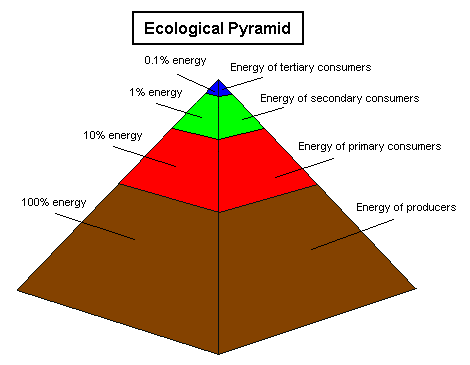
One way to calculate the energy transfer is by measuring or sizing the energy at one trophic level and then at the next. Calorie is a unit of measure used for energy. The energy transfer from one trophic level to the next is about 10%. For example, if there are 10,000 calories at one level, only 1,000 are transferred to the next. This 10% energy and material transfer rule can be depicted with an ecological pyramid that looks like this:

This pyramid helps one visualize the fact that in an ecological system there need to be many producing organisms at the bottom of the pyramid to be able to sustain just a couple of organisms at the top. In looking at the pyramid, can you guess how much larger the volume of each layer is as compared to the one just above it? Take a guess. It might not look like it but they are close to 10 times larger.
Final comments
Oaks rate a position at or very near the top of the wildlife food chain (or bottom of the ecological pyramid). They are the "staff of life" for many wild life species. The greatest food value comes from the acorn, especially during the winter season when other foods are scarce.
Squirrels, which are omnivores are neither at the bottom or the top of the food chain. Since the feed from producers as well as primary consumers, one could say that they occupy two layers in the pyramid.
Hawks, which are mature birds of prey, are at the top of the their food chain and of the ecological pyramid.